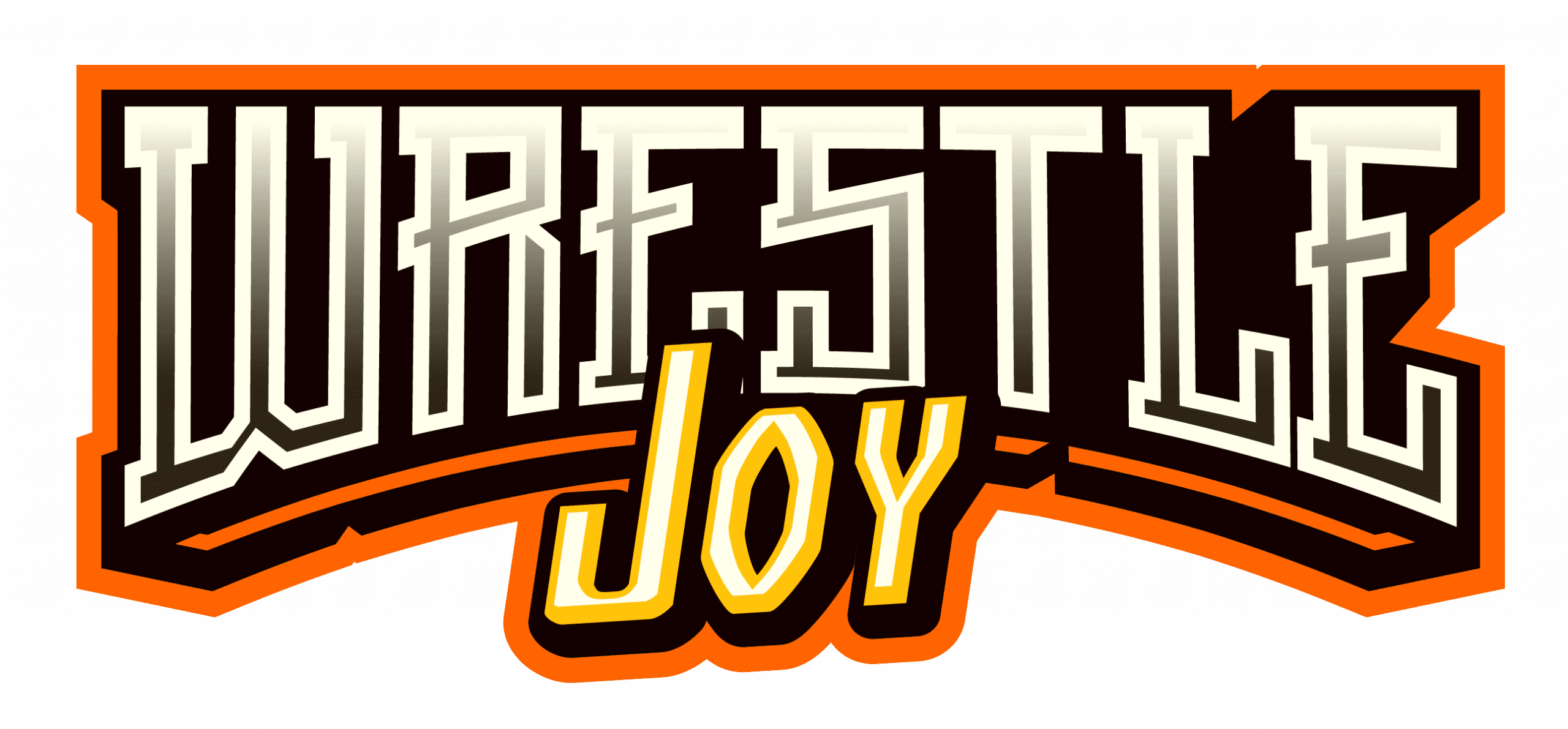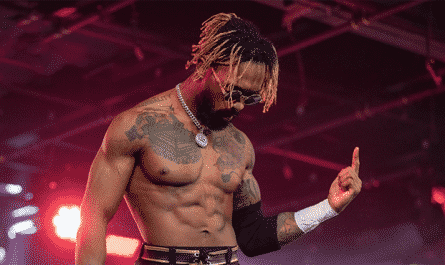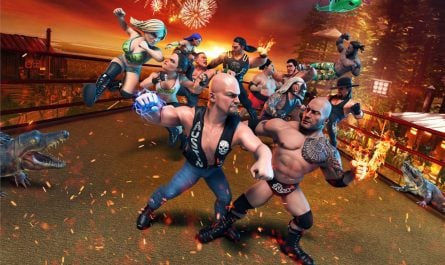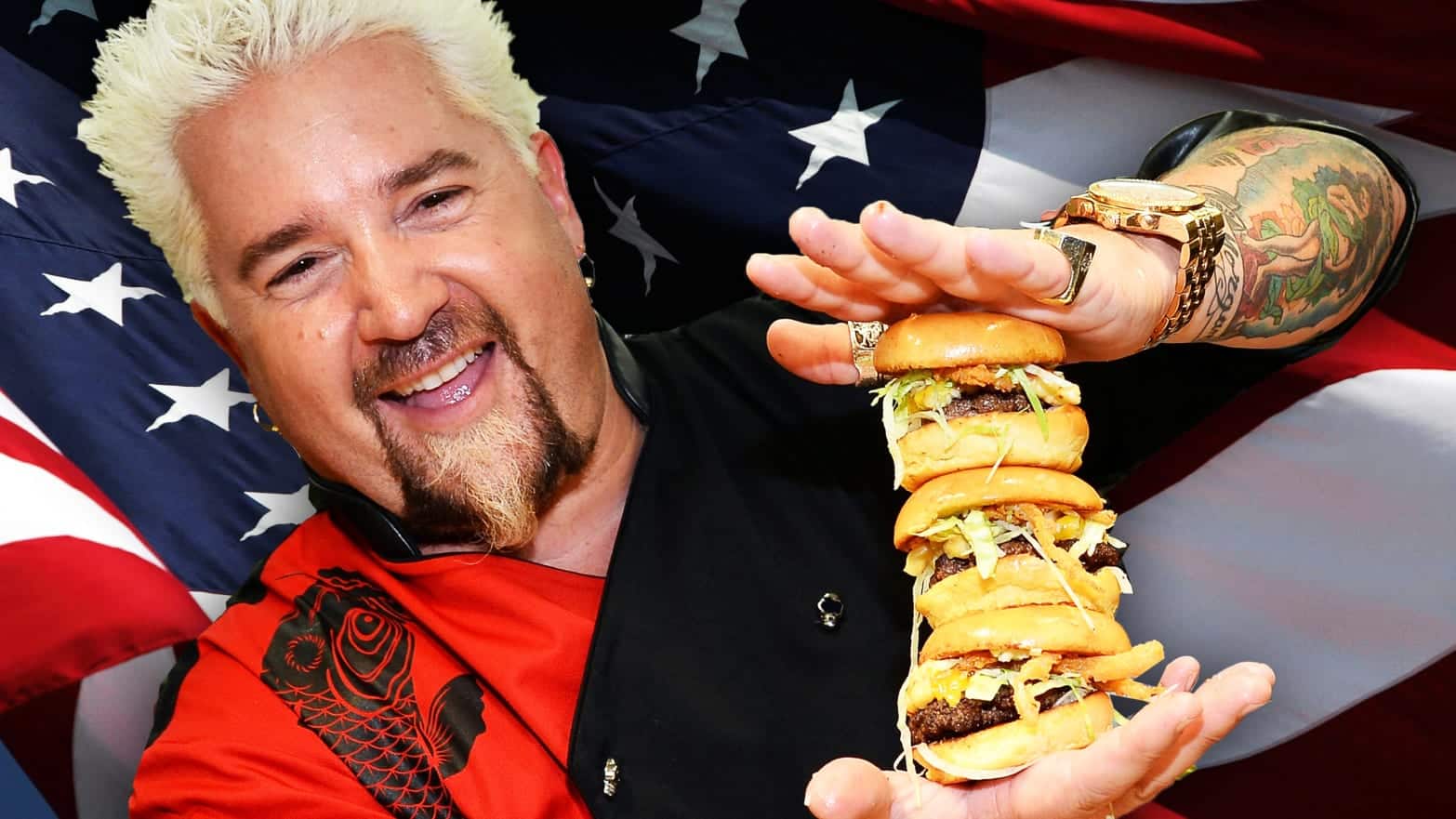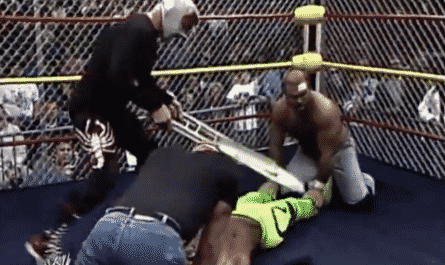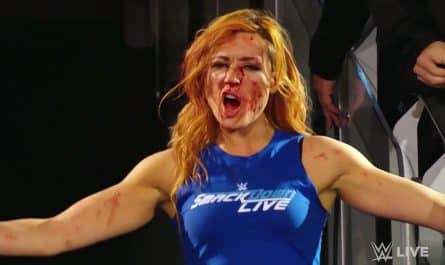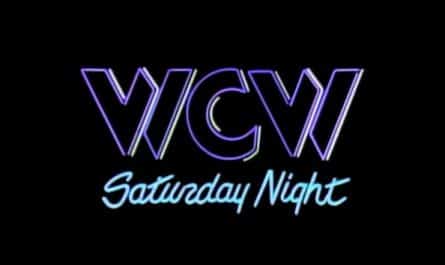
“So, I gotta ask you, I know this is silly, but… your friend Robbie… Does he know that this is a work?” I wasn’t prepared for the question, nor did I know how to answer. It was December of 2018, and I had just contacted David Arquette on twitter to try to arrange an interview with him for my former podcast “Why it Ended,” co-hosted by “Robbie E” Robert Strauss (Robert Stone in NXT). Arquette, being the agreeable, affable, and relentlessly likeable guy he is, agreed right away. But then he gave me his number. He wanted to talk to me? Ok. sure.
“Does he know that this is a work?” would be a strange question to ask anyway, especially when we are referring to Robbie. I don’t think I’ve seen Robbie give a stiff shot, or try a move that could seriously injure someone, ever. But I finally understood. “Oh Crap,” I realized, “Arquette has a match with RJ City against Robbie and Tyrus at House of Hardcore. This is David’s first match since the Nick Gage incident!” Arquette was justifiably shaken up from the incident, and I guess, I was there in that moment to reassure him.

“The Nick Gage Incident” is a moment that most wrestling fans will remember. It is also the most harrowing scene in “You Cannot Kill David Arquette”, a new documentary detailing Arquette’s far fetched, endearing, and ultimately inspiring run on the indies. The documentary details his mission of personal redemption in a business that he felt he owed something to. As anyone who has seen the documentary, or has heard an interview with Arquette knows; this is a man who knows his place in wrestling history, and feels very uncomfortable and unresolved about the circumstances that saw him hold “The Big Gold” high above his head as the legitimate WCW champ during the attitude era. But there was nothing he could do about it.
Until now.

“You Cannot Kill David Arquette” is the story of his quest for redemption. In true Arquette form, we see all sides of this story in a brutally honest fashion. His friends and family are dubious of his quest in a “what the F is he thinking, why the hell would he do this?” kind of way, but you get the impression that they know he needs to do this to be happy. There is no way to stop him if they really wanted to anyway.
The honesty of the film is reflected most effectively by Arquette’s transparent emotional reactions. From showing his palpable discontent at the way he is perceived by wrestlers and wrestling fans, to his tear filled elation at being accepted by luchadors in Tijuana, to his treatment for anxiety and depression, “YCKDA” shows us that in the very carny, pre determined, and dare I say perceived “fake” world of professional wrestling, David Arquette is real.
The film is compelling because Arquette is compelling.

As a result, you get one of the most accurate and realistic looks at the world of wrestling to date. It is evident that David Arquette, for all his admitted faults and forthcomings that we all share with our experiences in this lifetime, takes his perceived flaws to heart more than others. The flip side is, as a result he is more than most of us, the genuine article.
The film takes you through his hero’s journey by way of an independent wrestling scene that is very familiar to those of us who follow it. We are introduced to RJ City, who unsurprisingly jumps off the screen as a star, as they map out a match in such detail that it would make notorious “planners” Randy Savage and DDP blush with its moment by moment preparation.
We are introduced to his family, including his wife and kids, who have a great moment when he asks them what they think of him going into wrestling. Predictably, the middle school age daughter is embarrassed and says no, the younger son is all for it. His wife is initially frustrated by a lack of communication before going forward, but it is evident to the viewer that she supports David in his pursuit of contentment. Part of the charm of the movie is that he is able to get the doubters on board, including his daughter, who we see excitedly showing her mother, David’s ex-wife Courtney Cox, footage of his latest match and making great effort to convince her concerned mom of how cool it is.

“The Nick Gage Incident” is well documented. The scene we see through the talented movie maker’s lens of David realizing during a match with Gage that he is cut badly enough from a light bulb that he could possibly die, and then walking out of the ring in panic, is one I will never forget. We see David leave the ring, holding his neck as blood SPURTS out, leaving. But in a moment that should live in wrestling infamy forever, and a captured moment that tells you everything about the sometimes gruesome and priority abandoning nature of professional wrestling, David goes back in to take the fall.
You can almost read his mind; “Am I giving up? Am I a failure again? …I might die. But F*** it, I NEED to take this fall.” He climbs back in the ring, at great risk to his legitimate life to protect the business that he had (wrongly I believe) felt that he damaged, that he had brought shame upon, to take a fictional “1, 2, 3!” He made that decision, and wrestling fans now know forever, what David Arquette is willing to give to the wrestling world. Unreservedly.
The reality of watching him bang on the glass of the ER along with the late Luke Perry (who tragically died shortly after this incident) and his son, “Jungle Boy” Jack Perry, to try and get some help for his injuries is another stark moment in a documentary replete with them.

When I talked to David shortly after he almost bled out in a wrestling ring, he was understandably shaken by it. It seemed to me it might have cast some doubt in his head whether or not he had the ability to see his mission through. I’m not saying it was a thought that lived in his head for a long time, but for a moment it did. I remember telling him, “Bro, if you could PICK your opponent for a safe return match, you couldn’t find anyone better in the world to work with than Robbie.”
He laughed with that patented Arquette giggle that listeners of the Howard Stern show have come to know and love, and said, “yeah, I’m probably being silly.” He did return and he had a great match, by the way. My son and I drove up to see it, this was one we would not miss. It appeared to us at the time, that David Arquette, once one of the most reviled figures in wrestling history, had come full circle. He knew how to bring a crowd to his feet. He knew how to make a crowd cheer for him, and as result, turned one of the most genuine, knowledgable, and often cruel crowds in the world (at the former ECW arena) into his fans. David Arquette had become a wrestler.

“You Cannot kill David Arquette” presented a final scene that was an honest reflection of the experience we saw at House of Hardcore. I’m sure this moment was mirrored elsewhere, and no-one deserved it more. In the movie, his returning a year later to the same place he was spurned by wrestlers and fans alike, to have a wrestling match, was a success. He was eventually cheered as a triumphant babyface. This was the ending that the film, and he himself, truly deserved. This documentary is a rarity in the world of pro wrestling. It is not only a wrestling documentary that we as fans can enjoy, but also serves as one you could show to your friends who do not watch wrestling to try to explain to them why this world appeals to us so much. It represents, honestly and effectively, this strange and magical world that could even compel a literal Hollywood star to humble himself in a bid to gain acceptance from the people within it.
There is a cautionary tale within though, and one that fans that actually care about the industry should take to heart. We often feel emboldened to talk about people like David Arquette, Vince Russo, Dave Meltzer, and others as these entities who we can insult relentlessly as if we were in a vacuum. We have all fallen into that trap, and in doing so, we forget that there are often people listening to these harsh and not very well thought out words. We say we love wrestling, but these people are a crucial part, and they hear our words. They take these words to heart, and they sometimes can have consequences.
As wrestling evolves, we as fans have evolved as well, and hopefully have learned these lessons, and should realize we can be justifiably critical of wrestling product without being personally reprehensible to those who sacrifice their bodies and grace us with their skill. Even if we don’t like what they did. These are human beings who do their absolute best.

In the case of David Arquette, the words hurt, haunted, and ultimately motivated him to do something about it. But even if he didn’t, it would take much more than that to take this kind and good person down, because try as one might, “You Cannot Kill David Arquette.”
Highest Recommendation.
Matt Koon is long time wrestling fan and former wrestling podcast host who currently produces the Conrad Thompson family of podcasts as well as wrestling themes including FTR and Deonna Purrazzo. This is first article for WrestleJoy
